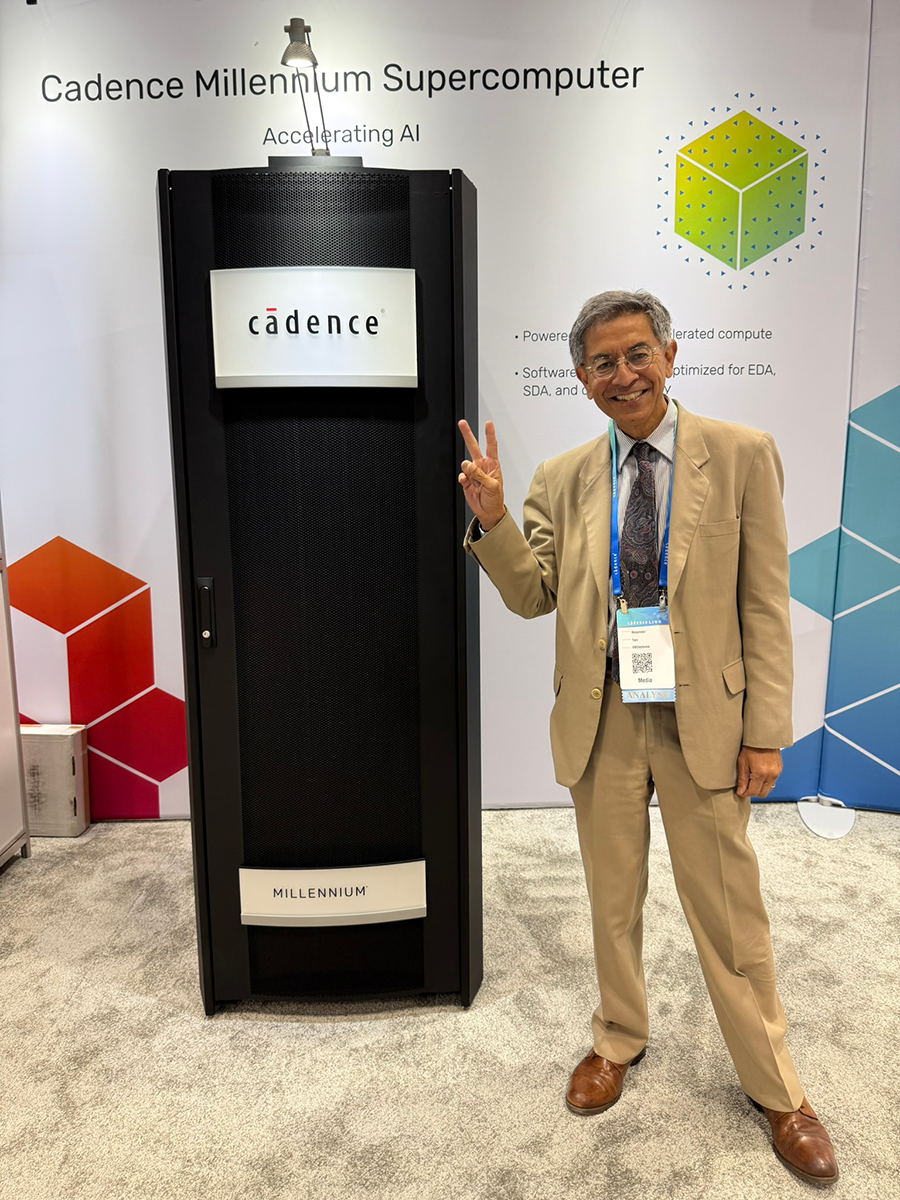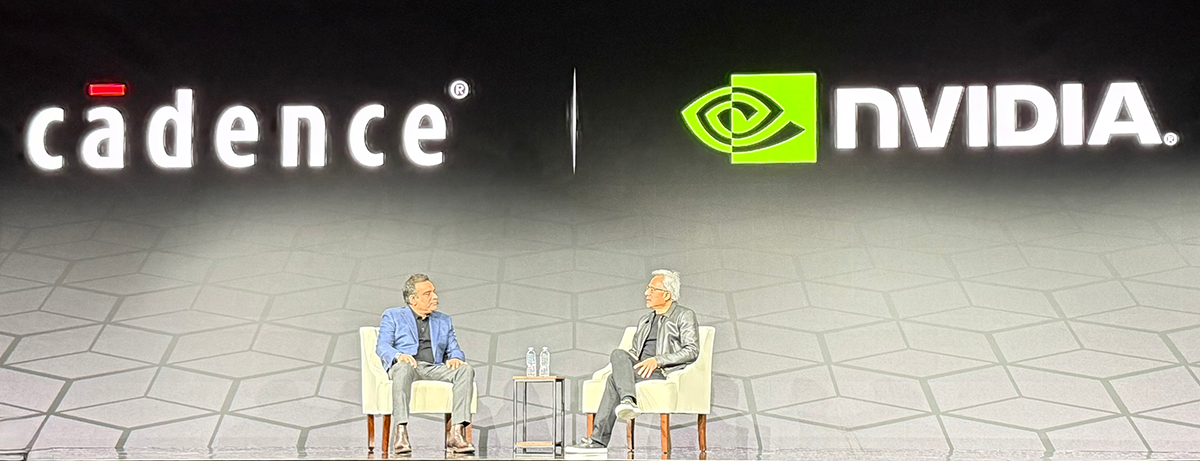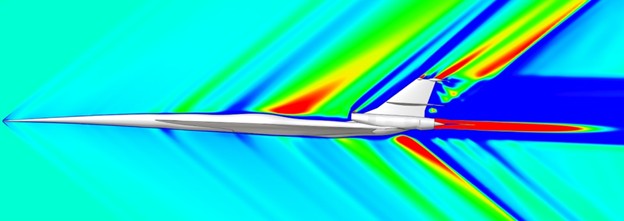
Cadence, the company best known for making software to design chips, has got into the business of making whole computers — in a big way. At CadenceLIVE 2025, held on May 7, 2025, in San Jose, California, the EDA (Electronic Design Automation) company introduced the Millennium M2000 Supercomputer, establishing a new high-end offering within the company’s Millennium Enterprise products.
The M2000 can run CFD 20 times faster and other applications, such as drug discovery (more on that later), faster still. The numbers are based on Cadence’s own CFD and drug discovery applications, which have been optimized for the M2000.
Was this to be the next dream computer for engineers? I imagined the M2000, which looked basically like a black box in the slides, under my desk, solving CFD problems in near real time.
Only later was I to find the M2000 on the show floor. It was as big as a refrigerator! When I asked how much, I was told it would cost around $2 million*.

Jensen Huang, CEO of Nvidia, who was in a “fireside chat” with Anirudh Devgan, president and CEO of Cadence, didn’t so much as bat an eye. He issued a “verbal purchase order” from the stage.
After the fireside chat, I talk to Michael Jackson, PhD, corporate VP and GM of the System Design and Analysis Group at Cadence and ask if Jensen will follow through once he finds out how much the M2000 costs.
“It doesn’t matter. We’re going to hold him to it,” laughed Jackson.
Not that Nvidia needs the help — it is one of the richest companies on Earth — but the net cost of 10 M2000s is reduced somewhat because Cadence buys the chips for the supercomputer from Nvidia.
A Token Amount
Jensen plans on using the M2000s in his dream “AI factory,” his term for a next-generation $60 billion datacenter built to handle the world’s boundless need for AI, all the ChatGPT queries, requests to make images, etc., that are adding up to an enormous computational cost. The unit of cost for data centers is tokens. A simple LLM query might cost 400 tokens and cost 4/10 of a penny. To generate an image may costs 20 time as much as a simple query. The user is not shown the cost of tokens and they probably don’t care. Instead, the cost is borne by AI companies and the profit reaped by data centers. The math is simple for data centers, says Jensen: make ten times as many tokens and make 10 times as much money.
Already in Use

“Cadence’s Millennium M2000 Supercomputer is expanding our capabilities in supersonic aircraft design by significantly improving scalability and efficiency. With the Millennium M2000 Supercomputer, the Cadence Fidelity LES Solver’s analysis run times have been reduced from a week to just two days,” said David Hunter, vice president, Tech at Boom Supersonic, in a quote supplied by Cadence. “By utilizing its GPU-accelerated computing, Boom is gaining highly dynamic and complex information earlier in the development cycle, allowing for more rapid decisions.”
GPUs the new CPUs
This is not the first supercomputer built with Nvidia’s chips. Nvidia introduced their own (much smaller) supercomputer at GTC, their annual developer conference held in May: the DGX Spark, a “compact supercomputer” that Jensen held in his hands onstage at GTC.
The M2000 is no ordinary supercomputer, those that raise computing speed with faster and more numerous CPUs. It has Nvidia RTX PRO 6000 Blackwell Server Edition GPUs that supply tons of parallel processing and Nvidia’s CUDA-X libraries that optimize their use.
Cadence claims up to 80x a speedup with certain applications in their press release.
The speed is achieved with much less power consumption: 20 times less power, according to Cadence.
“When we talk about power, we talk about it in relation to power consumption, as in performance per watt, not just raw power,’ says Jackson. “If we take a look at really challenging workloads, such as a full airplane in a high lift environment, that could require a supercomputer’s full capacity and run for days. That’s a tremendous amount of power consumption. Across the board, you get a tremendous increase in performance per watt. Plus, you’ll be able to run much less infrastructure for a lot less time. You can do more iterations and solve problems you might never have attempted before.”
Some applications benefit others more, says Jackson. CFD benefits more than FEA, for example.
“I’ve never met an engineer who’s satisfied with the throughput of the simulation. They get by and they make do with what they have. But if you go ask them if they want to be 10x faster, are you interested? They say, ‘absolutely!’”
The MV2000 can do simulations in less than a day that took supercomputers with hundreds of CPUs almost two weeks, according to Cadence.
The M2000 uses a Linux operating system, which Jackson contends is the ipso facto standard for engineering simulation. However, not being able to run Windows-based, even if its cost can be shared among several simultaneous users, could keep the supercomputer out of the realm of mainstream product design software (CAD), most of which runs on Windows.
“CFD is only one of the types of applications that can benefit from the M2000,” says Jackson. What if you need more compute in the data center, but there is a limit on how much power and cooling you can bring in? You can optimize your chips to raise the compute. In a 3D IC (integrated circuit), there is an IR drop problem that is solved with volts. Thermal considerations are significant in 3D ICs. We can model that and the cooling of the system. We can predict mechanical reliability. As you stack memory chips, the DRAM die stack gets taller, and thermal dissipation becomes critical. High temperatures can lead to higher stresses and fractures in the stack.
Can the M2000 function as a realistic simulator of an entire data center, modeling all the way down to the level of the integrated circuit, itself modeled in 3D. The size of the model and the number of calculations for a CFD simulation alone is mind-boggling. Then you add thermal and circuit simulation…
Jackson indicates this is indeed possible with the M2000.
My, How You Have Grown
The M2000 marks an expansion of Cadence, which has over the decades, grown from making EDA software, specializing in chip-level design, increasing scale to PCB boards, to system design, all the way to design and manufacture of whole supercomputers. While we were not paying attention, the company also got into CAE software, and its portfolio brims with thermal, CFD, and multi-physics simulations.
It makes sense. The performance of chips is affected by physics in addition to electricity. The temperature of chips and systems can be a limiting factor in server performance. Having an in-house solver eliminates the need to constantly submit designs to external solvers, such as those offered by Ansys and COMSOL.
Like Dassault Systèmes, Cadence has expanded into life sciences, namely biology and pharmaceuticals, and offers an application, namely Orion® Molecular Design Platform, on Cadence OnCloud. It is for this that the Millennium M2000 Supercomputer would be well suited, says Cadence, allowing the speed up of the discovery of potential drug candidates and enhanced process scalability.
The M2000 can run in the cloud or be installed on-premises.
The Cadence site appears to be taking orders for the M2000 but there is no mention of delivery dates.
Find out more information about the Millennium M2000 on the Cadence site.
_______________
*Cadence has not established a price, but Reuters estimated it will sell for around $2 million.
